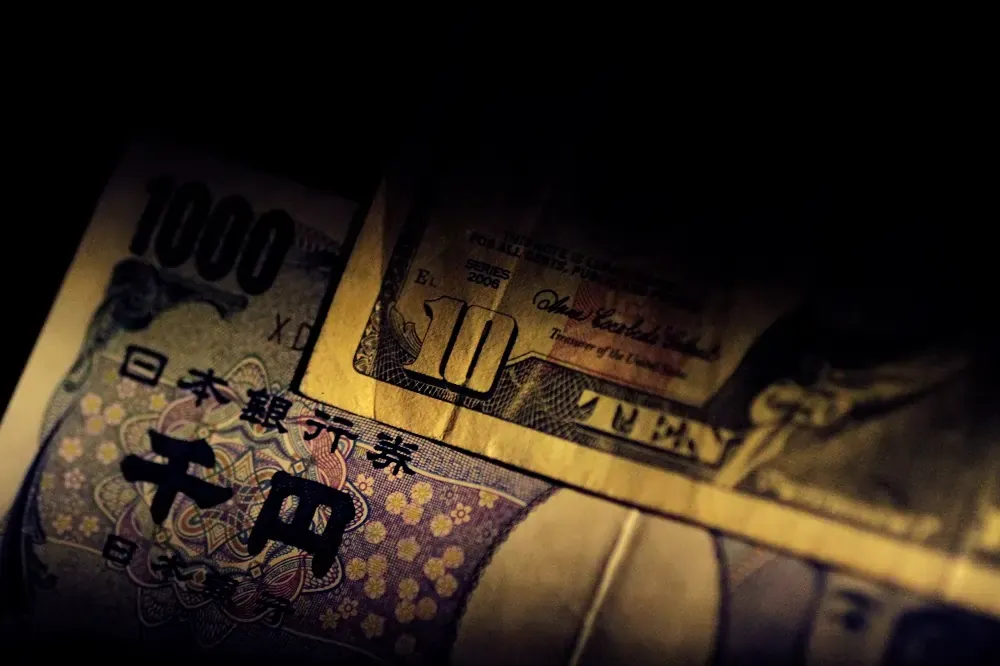
By Gertrude Chavez-Dreyfuss and Sruthi Shankar
NEW YORK/LONDON (Reuters) -The dollar bounced against the yen and other major currencies on Monday, as investors looked ahead to U.S. inflation data after Friday’s mixed payrolls report reinforced expectations that the Federal Reserve will likely stick to a smaller interest rate cut of 25 basis points (bps).
The greenback rose for the first time in five sessions versus the Japanese currency, while rising for a second straight day against the euro.
“Currency markets are seeing a bout of mean-reversion: after Friday’s payrolls report and subsequent Fed speakers failed to build a convincing case for an emergency-scaled cut at next week’s central bank meeting, cross-currency rate differentials are moving back into their longer-term ranges, and the dollar is powering higher,” said Karl Schamotta, chief market strategist at Corpay in Toronto.
U.S. rate futures have fully priced in a 25 bps rate cut at the Sept. 17-18 meeting, and a roughly 25% chance of a bigger, half-point move, according to LSEG calculations. On Friday, pricing for the bigger cut rose as high as 50%.
For 2024, traders expect 113 bps of easing, up from around 100 bps.
In midmorning trading, the dollar was up 0.5% to 142 yen. Monday’s recovery was a welcome respite for the dollar after a rough month so far. In September, the dollar has been down 2.1%.
Against the euro, the dollar advanced, with the single European currency down 0.4% at $1.1043. With the euro down, that pushed the dollar index, a gauge of the greenback’s value against six major peers, up 0.3% to 101.54.
Focus turned to Wednesday’s U.S. inflation report as the next indicator that could shape expectations for the outcome of the Fed’s September meeting.
Friday’s highly anticipated U.S. jobs data did not offer clarity on the question of whether the Fed would deliver a regular 25 bps or an outsized 50 bps cut at its Sept. 17-18 meeting.
While employment increased less than expected in August, the jobless rate ticked lower and wage growth remained solid, indicating that the U.S. labour market was cooling, but not at a pace that warranted panic over the economy’s growth outlook.
Fed policymakers on Friday signalled they are ready to kick off a series of rate cuts, noting a cooling in the labour market that could accelerate into something more worrying in the absence of a policy shift.
ECB PATH CLEARER
The European Central Bank’s policy meeting is Thursday and the ECB is widely expected to cut rates by 25 bps to 3.50%, having kicked off its rate cutting cycle in June with a quarter-point cut.
Traders price in a 52% chance of a similar move in December.
“We expect the ECB to cut at a gradual pace of 25 bps a quarter for the coming meetings, data dependent, and move its rates below 3%,” said Mohit Kumar, chief economist Europe at Jefferies.
In other currency pairs, the dollar gained 0.5% against the Swiss franc to 0.8483. It touched an eight-month low versus the franc on Friday.
The British pound eased to a more than two-week low of $1.3073 ahead of a slew of economic data this week that could shape expectations around the Bank of England’s policy moves this year. Sterling was last down 0.3% at $1.3094
(Reporting by Gertrude Chavez-Dreyfuss in New York and Sruthi Shankar in London; Additional reporting by Rae Wee in Singapore; Editing by Christina Fincher and Mark Potter)


